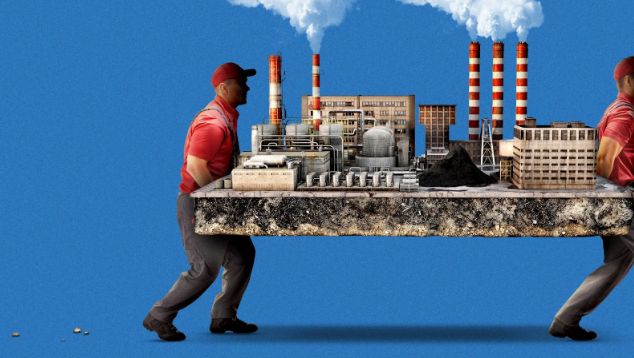Tariffs As a Tool, Not an End
Tariffs As a Tool, Not an End
Why free trade is not the answer to Trump’s economic failings.
President Trump’s tariffs cannot hurt America as much as free trade did.
Donald Trump has dominated the news cycle by returning America to its protectionist roots with a dramatic slate of new tariffs. While this is the correct direction for America to head toward, Trump’s method of implementing protectionism has potentially fatal flaws.
Withering criticisms have already been levied on Trump’s tariffs, including a lack of differentiation between products or a coherent strategic vision, souring American influence with allies, and little time for companies to shift toward domestic production. Yet many fallacious, ahistorical, and frankly untrue assertions lie amongst these arguments.
Free trade ideologues see Trump’s unpopular approach as an opportunity to shift public consensus back in their favor. Several free trader myths must be countered, showing that tariffs are not inherently damaging or benevolent toward economic conditions. Their success depends entirely on what policies accompany them.
The first myth that has become gospel among free traders is that history has shown that tariffs always strangle economies while those open to free trade always prosper. This is patently false, as anyone familiar with economic history could tell you.
Protectionism has been the norm for nearly the entirety of American history until 1973. Some 85 percent of all federal revenues before the Civil War came from duties on imported items. Alexander Hamilton and Henry Clay’s industrial policies implemented tariffs for decades at the national level, while the vast majority of Northern industrialists supported them to foster nascent American industry. The main form of resistance to tariffs during this period was from Southern slaveholders who despised manufacturing.
Tariffs remained high by modern standards throughout the Antebellum period. The defeat of the Confederacy in the Civil War discredited its anti-tariff ideology amongst the wider public. The economic system of chattel slavery was interwoven with free trade ideology, so much so that the Confederate Constitution banned the use of all tariffs as tools of industrial development. These views became unpopular as Northerners associated them with secessionary attitudes.
From 1870 to 1913, America began experiencing, except for perhaps late-20th-century China, the most dramatic industrialization in human history. During this time, GDP grew an average of 1.8 percent per year, which was larger than the one percent growth of free trade in Britain. American industries became some of the largest and most successful in the world, all the while tariffs averaged between 40 percent and 50 percent.
One popular historical argument free traders use is the Smoot-Hawley Tariff Act of 1930. They contend this act, which raised tariffs on many of America's trading partners, destroyed the Roaring Twenties and caused the Great Depression. However, the act only applied to one-third of America’s global trade and only raised duties from 44.6 percent to 53.2 percent. Contrary to the elementary version taught in high school history courses, international trade had already ground to a halt, as noted in a 1931 U.S. State Department report.
During America’s legendary post-war economic golden age, when GDP growth averaged 4 percent per year until 1967 and America constituted 50 percent of the global economy, tariffs remained as high as ever.
Countless other examples abound among foreign nations whose resilient and prosperous economies rest upon the bedrock of protectionism. Some well-known examples include Japan following World War II, South Korea from the 1960s onward, Britain before the 1840s, and, most infamously, China since the 1980s. If tariffs never work and always result in an economic downturn, nobody seems to have told the rest of the world or America before the 1970s.
Most first-world nations other than America are not committed to free trade ideology. Even if each country does not currently have high tariff rates, they are willing to employ industrial policy tools, including tariffs, when necessary.
Free traders claim that domestic companies reared under tariff umbrellas always stagnate and become globally uncompetitive. This is true only if tariffs are deployed in isolation. Countless of the world’s most innovative companies were created and sustained through tariffs, private innovation, and government industrial policies.
Some of the most well-known include Japan with Toshiba and Toyota, South Korea with Samsung and Hyundai, China with its countless industrial manufacturers of different types, America’s various defense contractors, such as Boeing and computing companies like IBM, the joint Franco-German consortium Airbus, and numerous others. Some industries and companies have thrived under protectionist measures, and some have struggled. This distinction depends on the additional measures successfully or unsuccessfully implemented by various governments.
The third problematic claim is that tariffs decrease GDP and economic growth because they defy the law of comparative advantage.
This theory, which traces back to economist David Ricardo, states that trade should be duty-free because each country should manufacture what it is best suited to produce. A famous analogy used to explain this is to ask why lawyers don’t do the work of their paralegals: they easily could, but they have the necessary conditions to operate at a higher skill level. Therefore, America should import manufactured products and only export highly technical services. Tariffs disrupt the natural cycle of cheaper consumer goods for everyone, according to the theory.
Various issues illustrate the naiveté of such a simple view of trade. First, it assumes that the inevitable trade deficits have only beneficial consequences for overall GDP. This is simply false.
Economist William A. Lovett estimated that the U.S. GDP is 20 percent less than it would be if our trade deficit had been balanced for the last four decades. America’s export of services doesn’t even come close to bridging this gap, as they’re only valued at $288 billion per year compared to our $1.2 trillion yearly deficit.
More crucially, the theory assumes that all people in a country can enter into more advantageous jobs, but this is silly. There aren’t and could never be hundreds of millions of white-collar, highly advantageous jobs in America for each blue-collar worker whose job shifted overseas.
Suppose a country has workers who produce computers and t-shirts, then all the t-shirt jobs leave the country. Could each t-shirt worker immediately start making computers? Would there be enough open slots or enough technical schools for them to learn the skills needed? No, there would simply be fewer jobs for lower-skilled workers.
This is why, when six million manufacturing jobs left America between 1998 and 2010 alone, nothing replaced them. This is why countless of America’s most prosperous communities have become ghost towns. If you want a reason as to why America’s social inequality has skyrocketed in the last few decades, don’t blame tax cuts, and don’t blame social safety nets. You’ve found the real answer here.
For all of the reasons above, before Trump’s inauguration, a return to protectionism in some form became nearly bipartisan. Biden silently continued and built upon the new precedent set by Trump during his first term. Biden’s BIA, CHIPS, and IRA Acts, as well as his tariffs against Chinese EV and solar manufacturers, were all overtly protectionist measures and decried as such by our enemies as well as allies.
Tariffs are a tool, not malevolent or heavenly abstracts that wreak havoc or usher in peace without regard to circumstances. Like all tools, their success depends on how they are used. Export subsidies, targets and processing zones, regulatory competition, credit allocation, sovereign wealth funds, forced savings policies, government procurement, national champions and industrial clusters are all policies available for implementation by governments. And history has shown that when they’re used in concert with tariffs, they create booming and sustained economic growth, world-class competitiveness, and high-paying jobs for blue-collar workers.
Will the Trump administration be successful? This remains to be seen. There are significant hurdles with answers that are unclear to me. But I am certain the answers aren't ahistorical free-trader talking points. The answer isn’t dogmatic ideologies, but solid thinking based on data, history, and reason.


